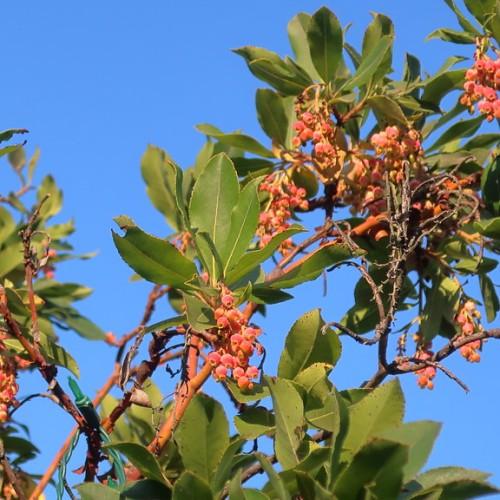
Marina Strawberry Tree
Arbutus 'Marina'
Cycle:
Perennial
Watering:
Frequent
Hardiness Zone:
9
Sun:
full sun,part shade
Fruits:
Fruits Ready In Fall
Edible:
Yes
Leaf:
Yes
Growth Rate:
Low
Drought Tolerant:
Yes
Salt Tolerant:
Yes
Care Level:
Medium
watering
Watering a Marina Strawberry Tree should be done on a regular basis throughout the growing season. During its growing season, which is roughly between April and October, this tree should be watered 2 to 3 times a week. Water the plant until the soil is moist and be sure to water deeply so that the root system is watered thoroughly. During the winter, the tree should be watered every 2 weeks, but water the tree less in periods of cooler weather and less during the summer months when the soil will naturally be more moist. It is important to make sure that the tree is not overwatered as this can lead to root rot and other diseases. A good way to ensure proper watering is to check the soil frequently and water when needed.
sunlight
The Marina Strawberry Tree thrives best in full sun for at least 6 to 8 hours of direct sunlight per day. Plants grown in shade may not bloom or will produce fewer flowers. In warm climates, Marina Strawberry trees can perform well in semi-shade or lightly filtered sunlight. However, too much shade will lead to a less productive plant.
pruning
Marina Strawberry Trees should be pruned twice a year, in spring and in late summer. In the spring, prune any damaged or dead wood, as well as crossing branches, suckers, and competing growth. The late summer pruning should remove any light suckers and reduce branch length to encourage flower bud formation and to increase air flow. Depending on the size of the tree, the amount of pruning should not exceed 1/3 - 1/2 of the total canopy. For smaller trees, prune lightly, removing no more than 1/3 of the canopy. For larger trees, 1/2 of the canopy can safely be removed without too much disruption to the overall structure.
